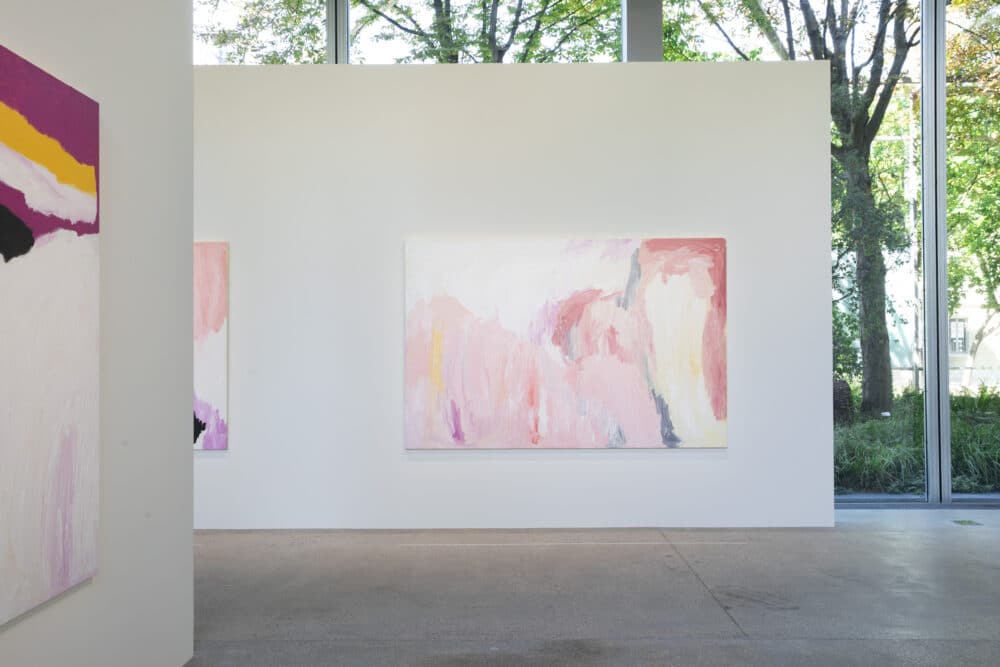The first major international solo-survey exhibition of artist Mirdidingkingathi Juwarnda Sally Gabori’s work is on view now in Montparnasse, Paris at the Fondation Cartier pour l’art contemporain until 6 November 2022. It is also the first exhibition of an Australian Indigenous artist at the Fondation. Alongside specialists in Kaiadilt art and culture, the artist’s family and the Kaiadilt community were consulted and collaborated with to deliver this special show.
Sally Gabori (1924–2015) is considered one of Australia’s most important artists. She represented Australia in the Venice Biennale 2013, and her work is held in state gallery collections in Australia as well as institutions abroad. The artist was born Bentinck Island, north of Australia, in the Gulf of Carpentaria, and as a young woman she and her community were displaced to the nearby Mornington Island in 1948.

Remarkably, Gabori started painting in her 80s, and quickly rose to prominence for her exceptional approach to art-making. Her aesthetic was bold and colourful, and ‘with no apparent ties to other aesthetic currents, particularly within contemporary Aboriginal painting’ explains the Fondation, her practice was one of ‘spontaneous, luminous, and profoundly original character.’ While some observers of her work have likened it to abstract expressionism, Gabori was not referential to art history. Instead she said of her work ‘This is my land, this is my sea, this is who I am.’
Judith Ryan, who was a Senior Curator, Indigenous Art at the National Gallery of Victoria and contributed to the new publication ‘Unprecedented’ on Gabori’s practice, writes; ‘Unconstrained by a pre-existing Kaiadilt painting tradition or inherited lexicon of signs, Sally Gabori undoubtedly went further than many other women artists and authored a non-derivative radical language that bypasses the need for written explanations or stories that beleaguer the field of Aboriginal art, to express sensations of locus, life and cultural memory in diaspora. The artist found a language that enabled her to live psychically in Country, from which she had been severed, and in so doing created something big, imposing and utterly original.’

Opened on 1 July by Australian Prime Minister Anthony Albanese, the exhibition comprises 30 large works created in her intense oeuvre which produced 2,000 pieces in total, from 2005 until her death ten years later.
Initially the artist, who also included weaving in her expression, started out with small scale paintings. Two years in she transitioned to creating canvases over six metres long. Her works can be enjoyed and appreciated for their dynamic forms and inspired colour choices, but they are also indicative of personal stories, family history, references to land rights, changing weather patterns and the memory of places dear to her.
If you’re in Paris, we encourage you to visit the Fondation Cartier pour l’art contemporain, the show will travel to Italy next year for the Milan Triennale. Fondation Cartier has created an interactive website to enjoy the show virtually, click here for their archive and special presentation to learn more about the incredible Sally Gabori.